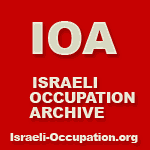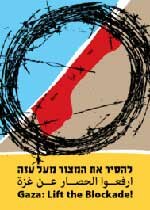By Eitan Bronstein, Zochrot ["Remembering"] – undated
www.nakbainhebrew.org/index.php?id=143
Tel Aviv University is asked to acknowledge its past and to commemorate the Palestinian village on which grounds the university was built
Dear friends,
Tel Aviv University was partially built on the lands of the Palestinian village of Sheikh Muwanis. While it is known that some of the village lands were sold in 1924, others were not; and there has never been any mention by the University of what happened to those villagers who left the village in a hurry in March 1948. Zochrot, an organization that encourages the Israeli state and its institutions to recognize the moral debt for the injustices caused to the Palestinian people during the establishment of the state of Israel, has started a campaign requesting that Tel Aviv University acknowledge the history of Sheikh Muwanis. This can easily be done through several means. The first is through a reference to the Palestinian history in the University’s manifesto, including a description of the ‘Green House,’ the only house remaining from the village and now functioning as a university clubhouse (see link below). The second is by mounting a plaque on one of the walls of the house to commemorate the village and its history. In addition, Zochrot calls for a memorial sign to be placed in a central position on university grounds, which will state that the university campus was built on lands belonging to the Palestinian village of Sheikh Muwanis.
Zochrot calls on our allies in the academic world to aid us in our campaign. Please send letters to the president of Tel Aviv University calling on the institution to recognize its history. Below is a sample letter (thus far ignored by Tel Aviv University) written by Zochrot. Only with the pressure of the academic world can Sheikh Muwanis regain the recognition it deserves. This may a minor issue compared to the increasing violence and tension in the region, but what it symbolizes is a key factor in the peace process. Remembering, acknowledging and accepting are key pillars in this process.
—————————————————————-
Please use the letter below as a template for your own letter. This is a copy of the original Zochrot letter.
Please send letters to Professor Itamar Rabinowich, President of Tel Aviv University:
E-mail:
[Please BCC all e-mails to: ]
Fax: 03-6422379
Postal Address:
Professor Itamar Rabinowich
President
Tel Aviv University
P.O. Box 39040
Tel Aviv 69978
ISRAEL
—————————————————————-
Professor Itamar Rabinowich
President
Tel Aviv University
Dear Professor Rabinowich,
We are writing you with a rather special request. As you are undoubtedly aware, the campus of Tel Aviv University was built on land belonging to the village of Sheikh Muwanis. With the development of the campus, there is almost no sign of the village, with the salient exception of the Green House, which has become the University’s clubhouse . We ask you to modestly commemorate this erased past.
This letter is signed by employees and students of Tel Aviv University; by descendents of the Palestinians who lived in Sheikh Muwanis until 1948; and by members of the “Zochrot” organization whose goal is to increase recognition among the Israeli people of the Palestinian life that existed here before 1948. We all believe that only by true and brave historical recognition will it be possible to build a just future in this torn country. Being a historian, we hope you will agree that a first-rate cultural institution such as Tel Aviv University should provide an example of this kind of historical recognition.
Our request is that Tel Aviv University contribute to this historical recognition. We suggest the following means of commemoration, but we would be happy to discuss other possibilities with you:
1. An explicit mention of the Palestinian past in the manifesto that describes the ‘Green House’, and on a plaque to be hung on one of its walls. The present manifesto blurs this past. Regarding the relevant years, it is mentioned that since 1924, parts of the village lands were sold. Right after that we learn that in 1948 a Le”hi camp was set up in the village, and that after the State was established, housing was set up for Machal and Air Force personnel in the village. Nothing is mentioned about what had happened to the Palestinian residents, and in fact their very existence is not mentioned explicitly. Academic research carried out at Tel Aviv University itself fills in the missing details, and it should therefore be easy to briefly mention them in the University Club manifesto. A note on the sign that is placed on the building, stating that it was established on the grounds belonging to Ibrahim Abu-Kchil from the village of Sheikh Muwanis, should also be added. The current manifesto, as well as the present sign, show the historical facts in a distorted fashion, which does not become a respectable institution such as Tel Aviv University.
2. Placing a memorial sign in a central position in the University campus that will mention that it was built, at least partially, on lands belonging to the Palestinian village of Sheikh Muwanis.
In many cultural sites throughout the world it is customary to put up memorial signs of the kind suggested above, specifying the history of the place. Denial and suppression of the past can yield bitterness and rage. Acknowledging memory is a step in the path to reconciliation.
Eitan Bronstein
Zochrot
RELATED Jonathan Cook: Arabs face increased discrimination at Tel Aviv University






































